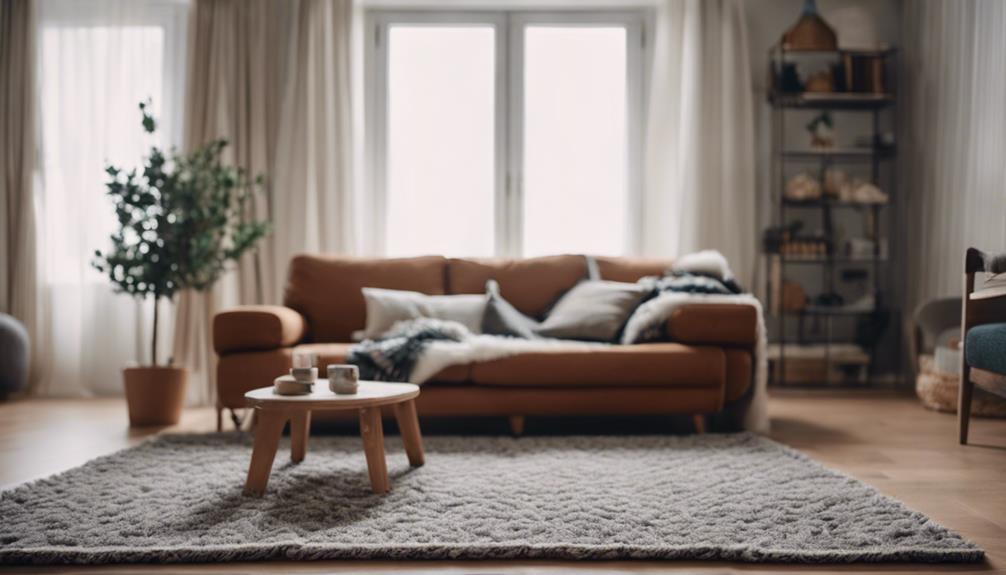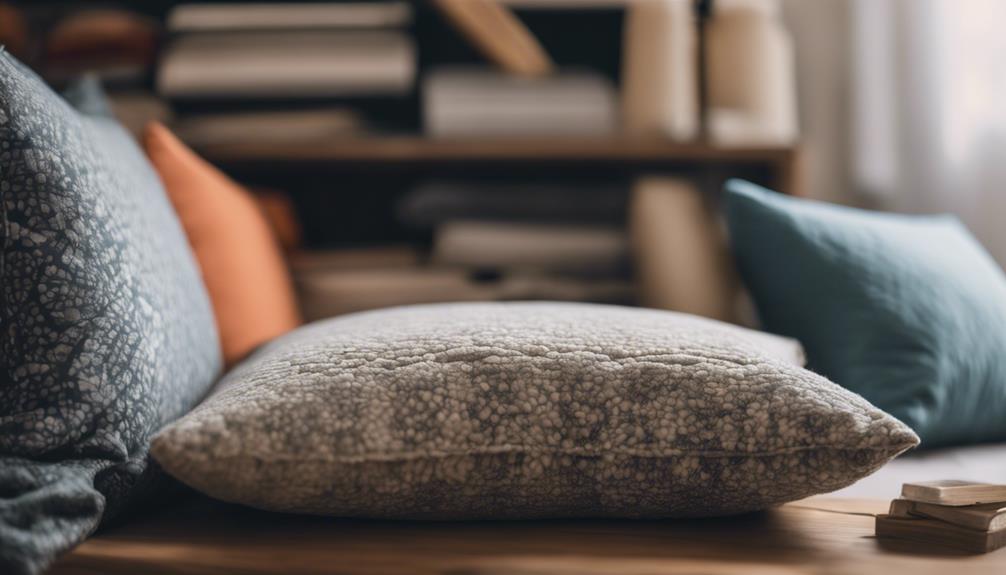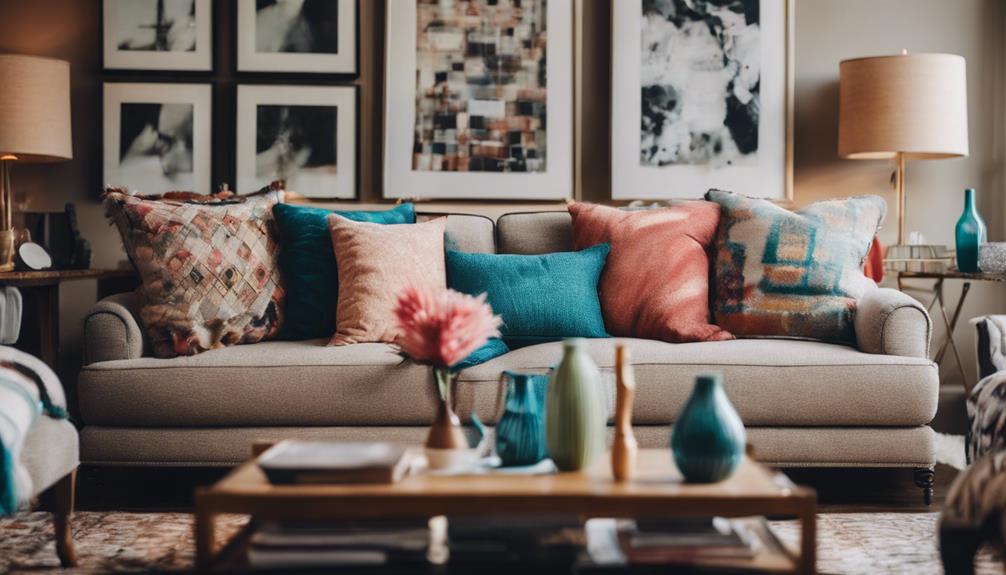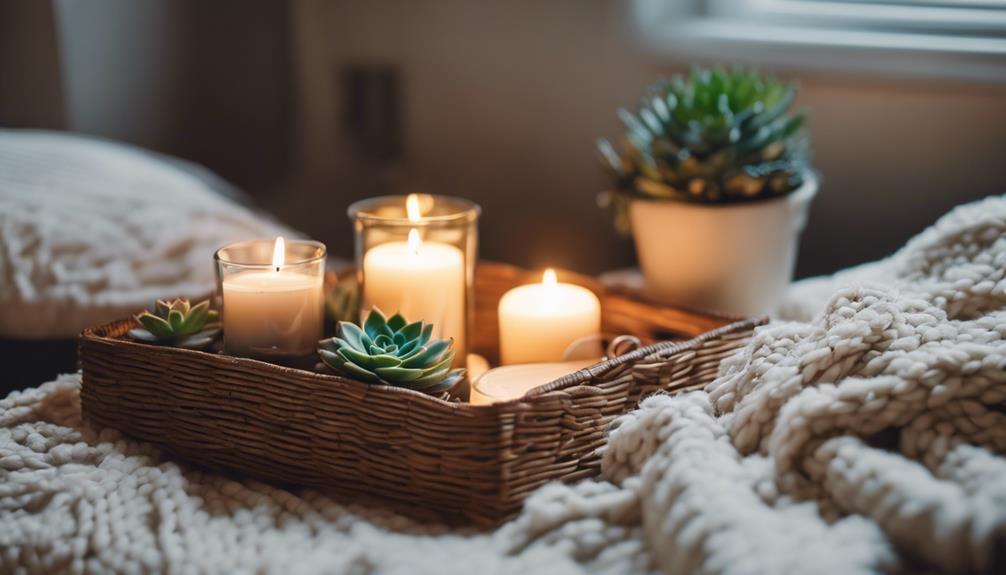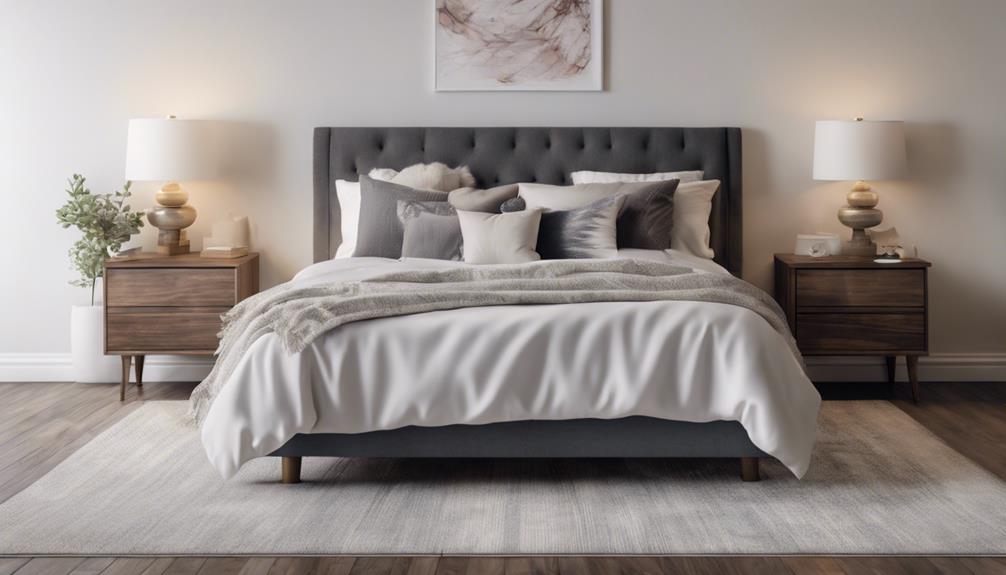Yes, a throw blanket can be used as a rug. It adds warmth and texture to a room, offering a cozy alternative to traditional floor coverings. To prevent tripping hazards, secure it properly with non-slip backing or grip tape. When choosing a throw blanket, consider durable materials like cotton or wool with a tight weave for longevity. Select a size that fits the space and complements decor. For a stylish touch, experiment with different textures, layering smaller blankets for visual interest. By incorporating throw blankets as rugs, you can create a harmonious and inviting environment in your home.
Key Takeaways
- Ensure the throw blanket is secured to prevent tripping hazards.
- Use non-slip backing or grip tape for stability.
- Choose a durable material suitable for rug use.
- Consider the size to fit the space correctly.
- Add warmth and texture to the room with a cozy alternative.
Benefits of Using a Throw Blanket as a Rug
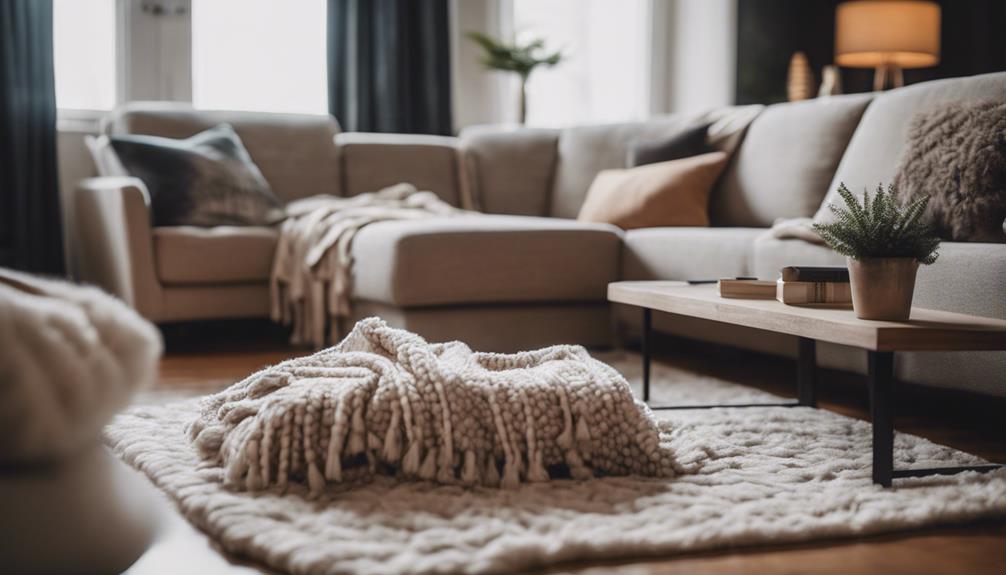
Using a throw blanket as a rug adds warmth and texture to a room while offering a cozy alternative to traditional floor coverings. When utilizing a throw blanket as an area rug, it's important to make sure it's properly secured to prevent tripping hazards. Non-slip backing or grip tape can help keep the blanket in place on smooth surfaces.
However, due to their soft and flexible nature, using a throw blanket as a rug may necessitate extra caution and maintenance compared to traditional area rugs. The benefits of using a throw blanket as an area rug include the ability to easily change the look and feel of a space without committing to a permanent rug. Additionally, throw blankets come in a wide variety of colors, patterns, and materials, allowing for endless customization options to suit any decor style.
Choosing the Right Throw Blanket
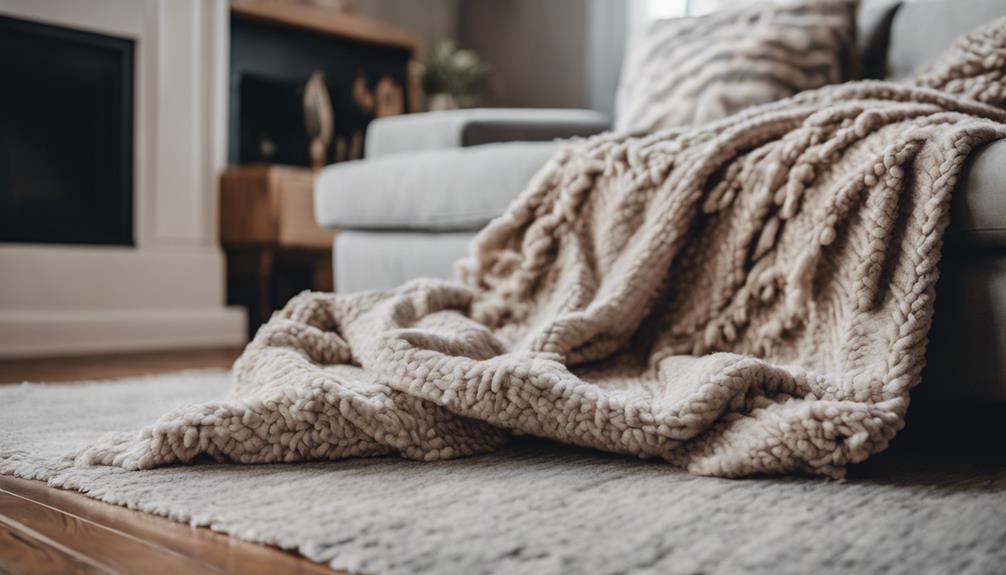
When choosing the right throw blanket to use as a rug, consider factors like material and size.
Opt for a material that's durable yet soft for comfort, like cotton or wool.
Make sure the size fits your space appropriately and secure it well to prevent any accidents.
Material Considerations
Considering the material of the throw blanket is essential when using it as a rug, especially focusing on durable fabrics like wool or cotton. These materials are commonly used for area rugs due to their ability to withstand foot traffic and maintain their quality over time. Opt for a throw blanket with a tight weave or construction to guarantee durability when used as a rug.
Look for options with non-slip backing or consider adding grip tape to secure the throw blanket in place. Additionally, choose a throw blanket that's easy to clean, as this is important when it's placed on the floor as a rug. Keeping these material considerations in mind will help you select a throw blanket that's suitable for use as a rug.
Size and Placement
For ideal visual balance and functionality, selecting a throw blanket rug that's proportionate to the area it occupies is crucial. Measure the space where the throw blanket rug will be placed to guarantee it fits correctly.
It's recommended to leave about 20 cm of flooring visible around the edges of the throw blanket rug for a polished look. Choose a throw blanket rug that complements the existing decor and style of the room to enhance the overall aesthetic.
Properly secure the throw blanket rug to prevent tripping hazards, especially in high-traffic areas. By paying attention to size and placement, you can create a harmonious and safe environment with your throw blanket rug.
Styling Tips for Throw Blanket Rugs
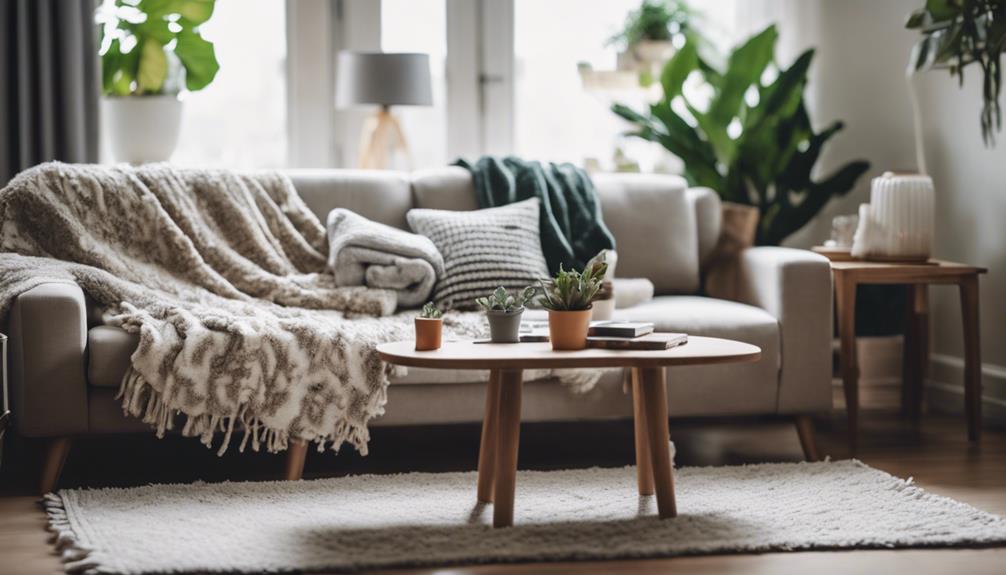
To enhance the aesthetic appeal of your space, experiment with different ways to incorporate throw blanket rugs into your decor. When styling a throw rug, consider the texture and pattern of the blanket to complement the overall look of the room. Opt for throw blankets that are durable and easy to clean, especially if they'll be used as rugs.
To guarantee no tripping hazards, make sure the throw blanket rug is securely in place. Using non-slip rug pads or grip tape can help keep the throw blanket rug from sliding around on smooth flooring surfaces.
For a stylish touch, utilize throw blanket rugs in low-traffic areas or as decorative accents in your home. By incorporating throw blanket rugs strategically, you can add warmth and visual interest to your space while creating a cozy and unique atmosphere.
Where to Place Throw Blanket Rugs
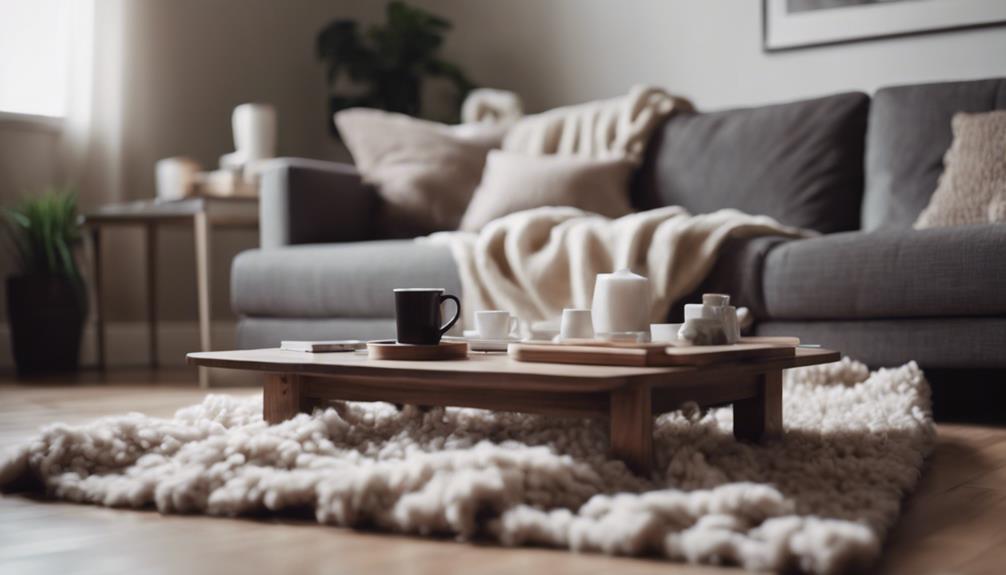
When considering where to place throw blanket rugs, it's crucial to focus on ideal rug placement that complements the room's layout.
Coordinating with the existing decor can help guarantee the throw blanket rug seamlessly integrates into the space.
Whether draped over furniture or layered on floors, strategic placement can enhance both the aesthetic and functionality of the room.
Optimal Rug Placement
Placing throw blanket rugs strategically in different areas of your home can enhance both the comfort and aesthetic appeal of the space. These versatile pieces not only provide an ideal layer of warmth but also add a stylish touch to your decor.
For best rug placement, consider high-traffic areas like entryways or living rooms where the rug can help protect floors from wear and tear. You can also drape a throw blanket rug over furniture such as sofas or chairs to enhance the overall look of the room.
To create visual interest, layering a throw blanket rug over a larger area rug can add texture and depth. Remember to secure the throw blanket rug properly to prevent tripping hazards, especially in areas with heavy foot traffic.
Coordinating With Decor
When decorating with throw blanket rugs, it's important to think about how to coordinate them with your existing decor to maximize their visual appeal and functionality. By matching the colors and patterns of the throw blanket rug with your furniture and accessories, you can create a cohesive and inviting atmosphere in the room.
Consider layering a throw blanket rug over a larger area rug to add a layer of warmth and texture, enhancing the overall look of the space. Draping a throw blanket rug over a chair, ottoman, or bench can't only provide a cozy touch but also tie the elements of the room together.
Whether in high-traffic areas or cozy nooks, strategically placing throw blanket rugs can elevate the style and comfort of any space.
Maintenance and Cleaning Tips
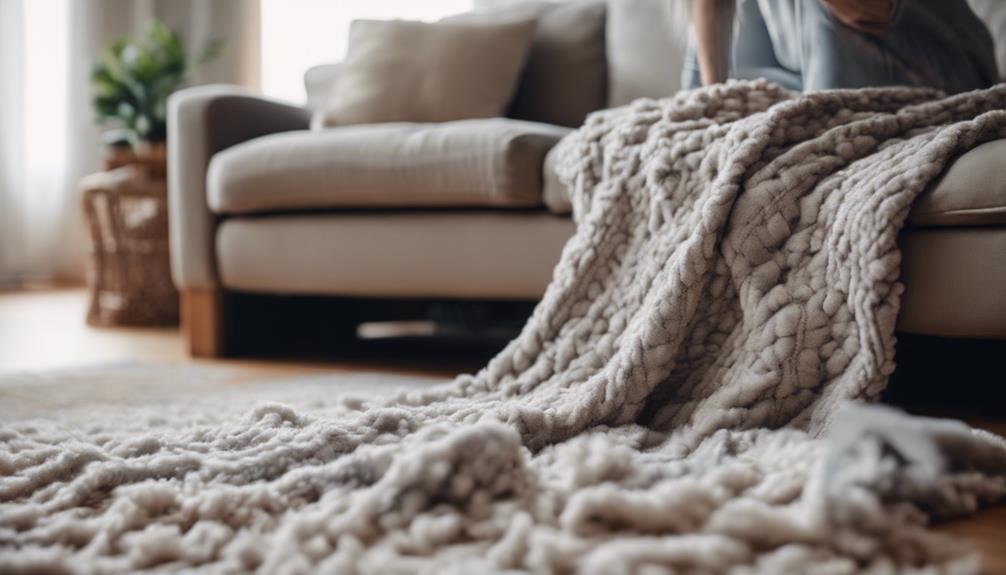
To maintain your throw blanket rug looking its best, remember to regularly shake out or vacuum it to remove dust and debris. Here are some maintenance and cleaning tips to make sure your throw blanket rug stays in top condition:
- Spot clean spills promptly: Address any spills or stains on your throw blanket rug immediately to prevent them from setting and becoming more challenging to remove.
- Check the care label: Always refer to the care label on your throw blanket for specific cleaning instructions tailored to the material, ensuring you preserve its quality over time.
- Use gentle cleaning methods: When washing your throw blanket rug, opt for cold water and a mild detergent to avoid damaging the fibers while effectively cleaning the rug.
- Air dry flat: To preserve the shape and integrity of your throw blanket rug, air dry it flat instead of hanging it, which could stretch the fibers and affect its longevity.
Throw Blanket Rug Vs Traditional Rug
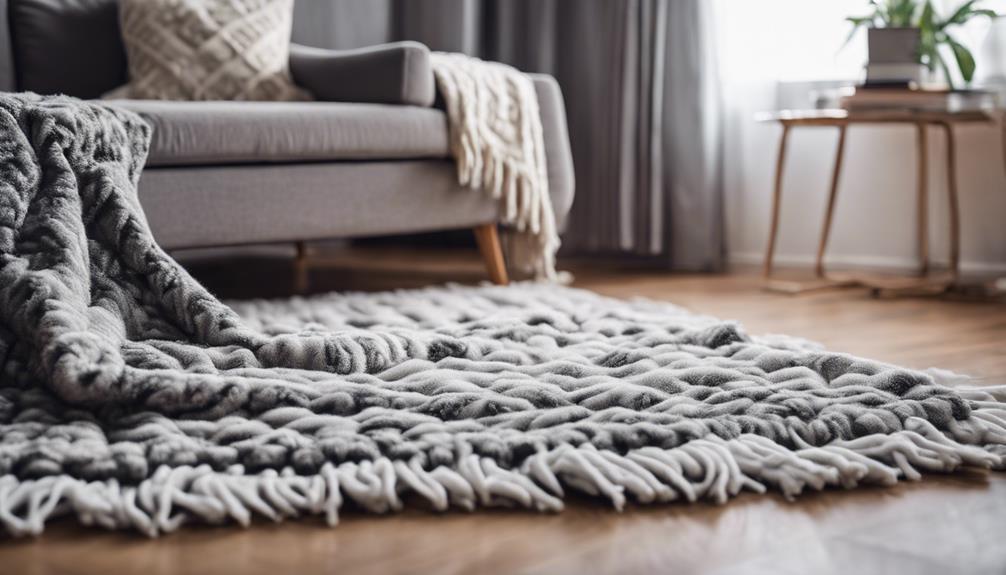
In comparison to traditional rugs, throw blankets are typically softer and intended for snuggling rather than floor use. While traditional rugs are sturdier and designed to be placed in high-traffic areas, throw blankets may not withstand the same level of wear and tear. Here's a comparison between throw blanket rugs and traditional rugs:
| Aspect | Throw Blanket Rug | Traditional Rug |
|---|---|---|
| Material | Soft and cozy | Durable and sturdy |
| Purpose | Designed for snuggling | Meant for floor use |
| Size | Larger and less compact | Standard rug sizes |
| Durability | Less sturdy, may require extra care | Sturdy and long-lasting |
When considering whether to use a throw blanket as a rug, it's essential to acknowledge the differences in design and intended use. While a throw blanket can add warmth and texture to a room, it may not provide the same level of functionality as a traditional rug in terms of durability and maintenance.
Layering Throw Blankets for Style
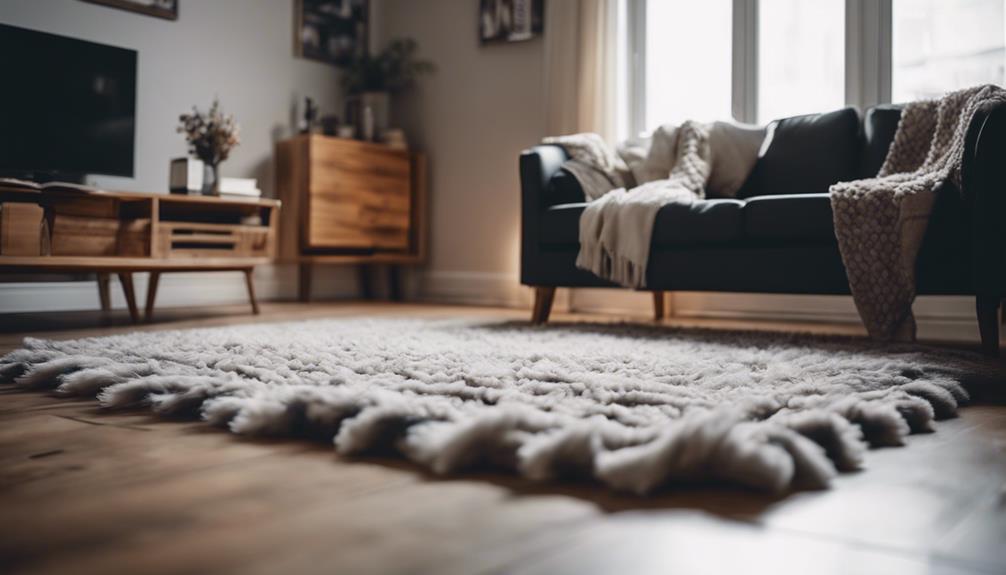
Layering throw blankets for style allows for the incorporation of warmth and texture into a space, creating a cozy and inviting atmosphere. When choosing the right throw blankets for layering, consider the following:
- Size Variation: Mix throw blankets of different sizes to create visual interest and depth in your space.
- Texture Contrast: Combine throw blankets with varying textures like chunky knits and smooth weaves for a tactile experience.
- Color Coordination: Select throw blankets that complement your existing decor colors or add a pop of contrast for a dynamic look.
- Pattern Play: Experiment with patterns by layering throw blankets with different designs to add character to your room.
DIY Throw Blanket Rug Ideas
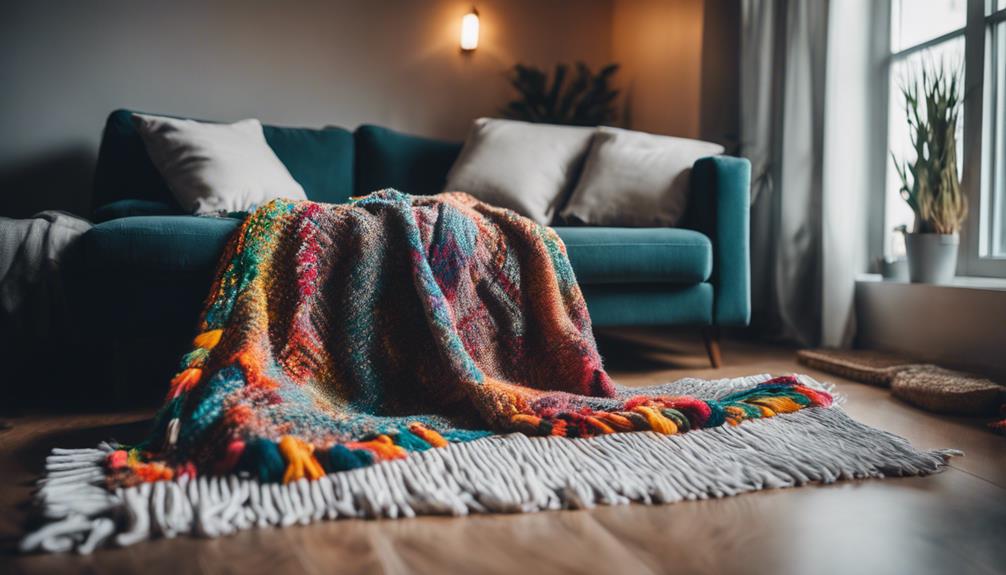
Considering their cozy appeal, throw blankets can be repurposed creatively as rugs with the right techniques and precautions in place.
While throw blankets aren't typically designed for use as rugs due to their soft and snuggly nature, there are DIY ideas to transform them effectively. To repurpose a throw blanket as a rug, it's important to guarantee it can withstand foot traffic by choosing a durable material and appropriate size.
Securing the throw blanket properly is vital to prevent slipping or tripping hazards. Adding a non-slip backing or grip tape can help enhance the functionality of the throw blanket rug.
Incorporating Throw Blanket Rugs in Different Rooms
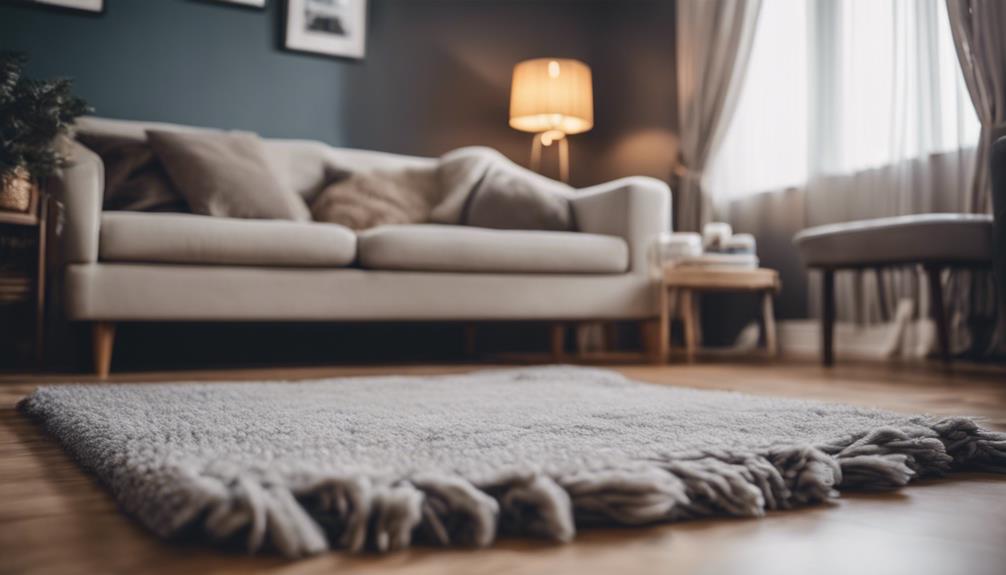
We often overlook the versatility of throw blankets, but incorporating them as rugs in different rooms can instantly elevate the ambiance and comfort of the space. When using throw blankets as rugs, consider these tips to make the most of this decor choice:
- Living Room: Lay a smaller throw blanket rug near the sofa to add a cozy touch and define a seating area.
- Bedroom: Place a throw blanket rug at the foot of the bed to introduce warmth and texture while also protecting your feet from cold floors in the morning.
- Nursery: Use a soft, washable throw blanket as a rug to create a comfy spot for playtime or bonding moments with your little one.
- Reading Nook: Opt for a smaller-sized throw blanket rug under a comfy chair or bean bag to enhance the cozy atmosphere and encourage relaxation while diving into a good book.
Frequently Asked Questions
Is a Throw a Blanket or a Rug?
A throw is a blanket, not a rug. Throws are smaller, lighter, and used for decoration, while rugs are larger and placed on the floor to define areas.
Throws add color, texture, and coziness to a space, while rugs soften hard floors and reduce noise.
Can You Call a Blanket a Rug?
Yes, one can refer to a blanket as a rug depending on its usage. Blankets are typically designed for warmth, while rugs serve as floor coverings.
However, in casual settings, people might use the term interchangeably. It's crucial to take into account the material and durability when deciding between a blanket and a rug.
Ultimately, the choice depends on the intended purpose and the level of foot traffic the item will endure.
How to Make a Throw a Rug?
Yes, you can easily turn a throw blanket into a rug. Lay the blanket flat where you want the rug to be, and use rug grippers or non-slip pads underneath to keep it in place.
Secure the edges to prevent tripping hazards and consider sewing or hemming for a polished look.
Regularly check and readjust the blanket rug to maintain its appearance and position.
Can I Use Throw Blanket as a Blanket?
Yes, you can use a throw blanket as a rug. It mightn't be as durable as a traditional rug, but with proper securing methods like non-slip backing or grip tape, it can work well in low-traffic areas.
Remember to secure it tightly to prevent slipping and tripping hazards. While it's not the primary use of a throw blanket, it can add a cozy touch to your space if done securely.
Can a Throw Blanket Double as a Symbolic Rug in Home Decor?
A throw blanket can indeed double as a symbolic rug in home decor. In many cultures, the meaning of blankets symbolized warmth, comfort, and security. By using a throw blanket as a rug, you can infuse your space with these feelings, creating a cozy and inviting atmosphere.
Conclusion
To sum up, using a throw blanket as a rug can add a cozy and stylish touch to any room. While unconventional, it offers versatility and can be a cost-effective alternative to traditional rugs.
By choosing the right throw blanket, styling it appropriately, and maintaining it properly, you can create a unique and inviting space.
So go ahead, break the rules and try using a throw blanket as a rug – you might just be pleasantly surprised!
